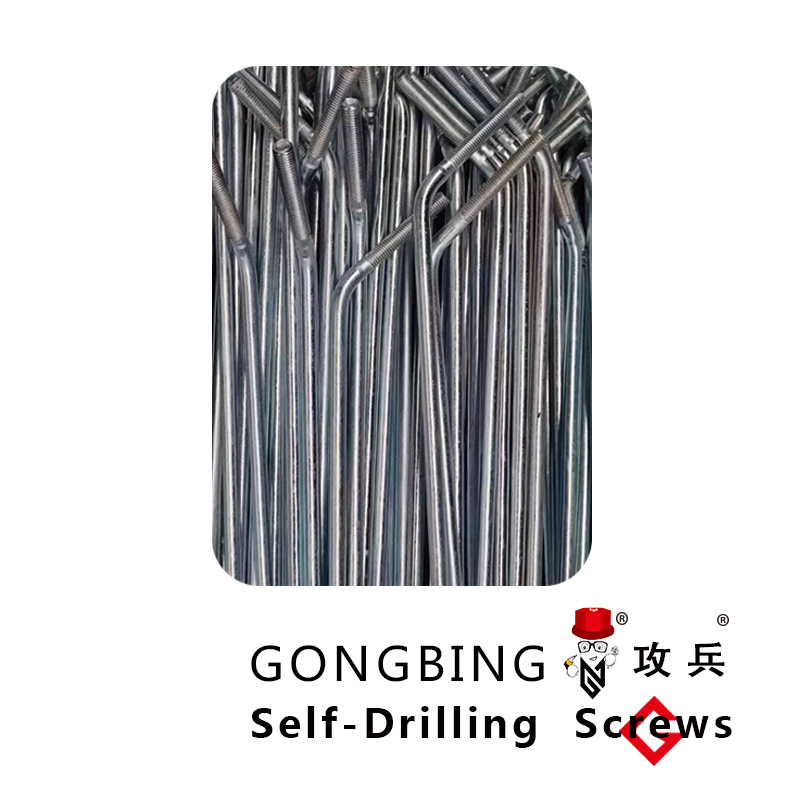Wedge Anchors for Concrete Applications and Installation Techniques Explained
Understanding Wedge Anchors for Concrete A Comprehensive Guide
Wedge anchors are essential fasteners used in construction and various industrial applications, designed to securely anchor objects to concrete surfaces. Their unique design provides a robust and reliable connection, making them ideal for heavy-duty fixtures, machinery, and structural components. In this article, we will explore the characteristics, installation processes, advantages, and considerations when using wedge anchors in concrete.
Characteristics of Wedge Anchors
Wedge anchors are typically made of carbon steel, stainless steel, or other corrosion-resistant materials, allowing them to withstand environmental stresses and heavy loads. The anchor consists of three primary parts the threaded rod, the expansion clip, and the cone-shaped wedge. This configuration is a key feature that distinguishes wedge anchors from other types of anchors.
When the anchor is inserted into a pre-drilled hole in the concrete, turning the threaded rod drives the cone against the expansion clip, causing it to expand and wedge itself against the sides of the hole. This mechanical interlock provides an exceptionally strong hold that is less susceptible to pull-out and shear forces compared to other anchoring methods.
Installation of Wedge Anchors
Installing wedge anchors requires careful attention to detail to ensure a secure fit. Here’s a step-by-step guide for installation
1. Select the Correct Size Choosing the appropriate size and length of the wedge anchor is crucial based on the load requirements and the thickness of the concrete.
2. Drill the Hole Use a hammer drill with a masonry bit to create a hole in the concrete. The diameter of the hole must match the diameter of the wedge anchor, and the depth should meet the manufacturer's specifications.
3. Clean the Hole Before inserting the anchor, clean out the hole of any dust or debris to ensure maximum contact between the anchor and concrete.
4. Insert the Anchor Place the wedge anchor into the hole, ensuring it is seated properly and is upright.
5. Tighten the Anchor Using a wrench, turn the nut or the head of the anchor clockwise. As you tighten, the wedge will expand, creating a strong grip within the concrete.
wedge anchor for concrete

6. Final Check Once installed, double-check the tightness and ensure that it is secure.
Advantages of Using Wedge Anchors
There are several advantages to using wedge anchors, making them a preferred method for anchoring in concrete
- High Load Capacity Wedge anchors are designed to handle heavy loads, making them suitable for industrial applications, machinery, and structural supports.
- Durability Made from high-quality materials, they are resistant to corrosion, wear, and environmental factors, ensuring longevity and performance.
- Ease of Installation While proper installation techniques are essential, wedge anchors can be installed relatively quickly and easily, making them a practical choice for contractors.
- Versatility They can be used in various applications, from concrete walls and floors to heavy machinery installations and structural connections.
Considerations When Using Wedge Anchors
While wedge anchors are highly effective, certain factors must be considered. First, ensure the suitability of the concrete substrate; it should be strong enough and free of defects that may compromise hold strength. Additionally, always adhere to the manufacturer’s specifications regarding anchor size, installation depth, and load ratings.
Environmental conditions can also affect the performance of wedge anchors. In corrosive environments, use of stainless steel or galvanized anchors is recommended to prevent rust and degradation over time.
Conclusion
Wedge anchors are a reliable and efficient solution for anchoring in concrete, offering strength and durability for a variety of applications. Understanding their characteristics, proper installation methods, and advantages can help ensure their effective use in projects. By taking necessary precautions and adhering to best practices, contractors and builders can leverage the benefits of wedge anchors, ensuring safe and secure installations.
-
Weatherproof Plastic Expansion Anchors for OutdoorNewsJun.06,2025
-
Sustainability in the Supply Chain: Eco-Friendly TEK Screws ProductionNewsJun.06,2025
-
Load-Bearing Capacity of External Insulation FixingsNewsJun.06,2025
-
Double Head Bolts: Enhancing Efficiency in Industrial MachineryNewsJun.06,2025
-
Corrosion Resistance in Chipboard Screws: Coatings for Wholesale DurabilityNewsJun.06,2025
-
Butterfly Toggle Bolts : Enhancing Structural ResilienceNewsJun.06,2025
